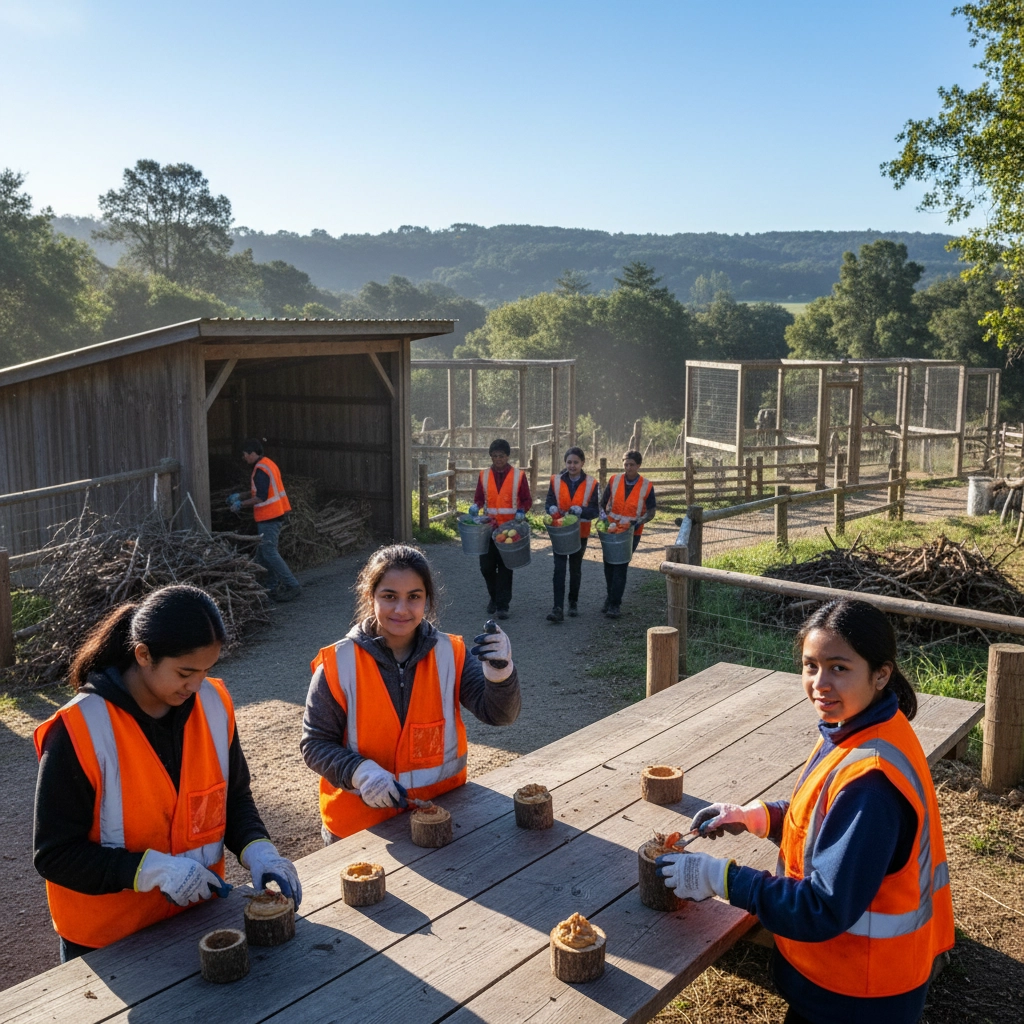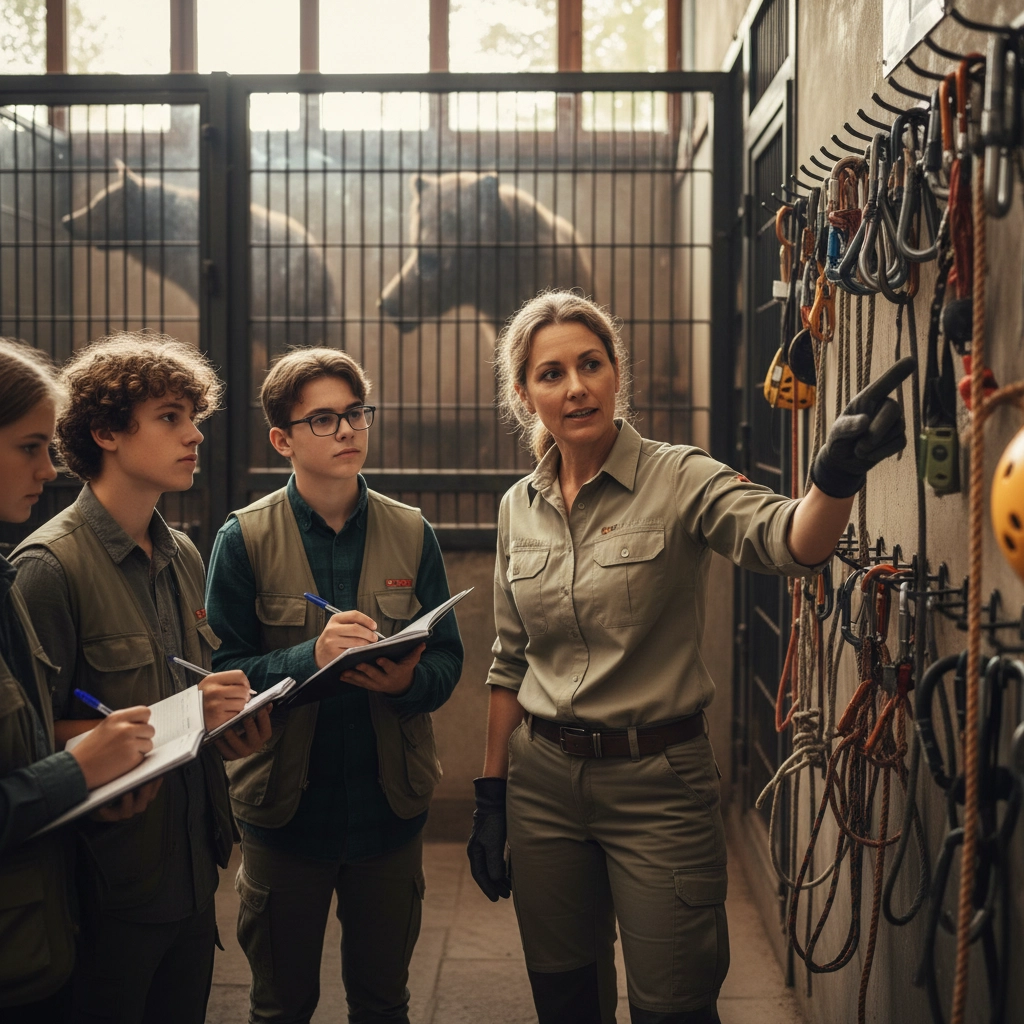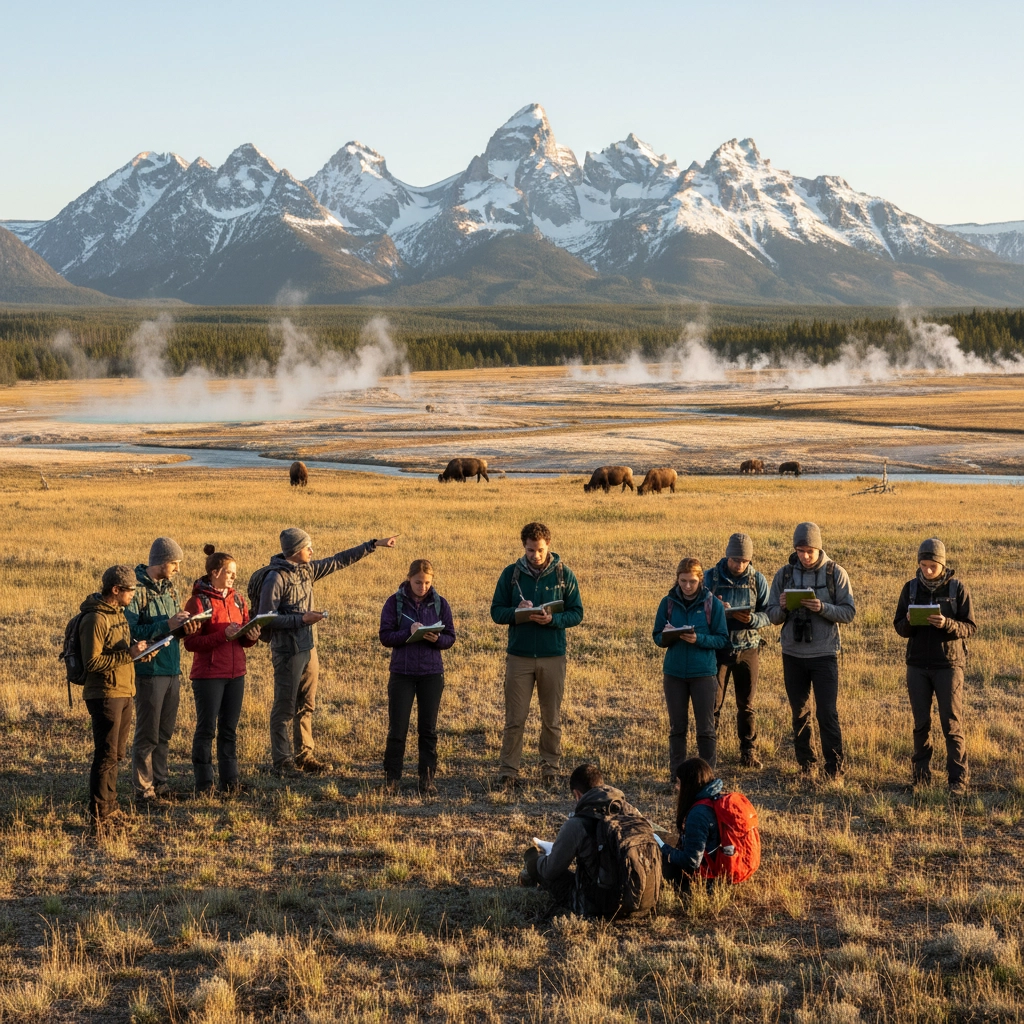Volunteering at the Wolf and Grizzly Center in West Yellowstone: Inspiring Student Conservation Service
- Caleb Mullenix
- Oct 16
- 5 min read
Engaging students in meaningful conservation service at the Grizzly & Wolf Discovery Center in West Yellowstone represents one of the most impactful educational experiences available for developing future environmental stewards. This accredited facility, recognized among the top 10% of experiences worldwide, provides unparalleled opportunities for students to contribute directly to wildlife conservation while gaining hands-on experience with native species of the Greater Yellowstone Ecosystem.
Understanding the Educational Mission and Conservation Impact
The Grizzly & Wolf Discovery Center serves as a critical educational institution that bridges the gap between theoretical conservation knowledge and practical application. Establishing clear educational objectives before participating in volunteer programs ensures maximum learning outcomes and meaningful service contributions.
Begin by researching the center's core mission: educating visitors about wildlife conservation challenges and demonstrating the integral relationships between bears, wolves, and the Yellowstone ecosystem. This understanding provides essential context for student volunteers and establishes the foundation for their service experience.
Create comprehensive pre-trip educational materials that explain:
The ecological significance of apex predators in maintaining ecosystem balance
Current conservation challenges facing grizzly bears and gray wolves
The center's role in wildlife education and species preservation
Historical context of human-wildlife coexistence in the Greater Yellowstone region

Preparing Students for Conservation Volunteer Service
Ensuring student readiness for volunteer service at the center requires systematic preparation that addresses both educational components and practical considerations. Develop a structured preparation program that spans several weeks before the volunteer experience.
Phase 1: Educational Foundation Building
Establish baseline knowledge through focused curriculum covering:
Wildlife biology and behavior patterns of grizzly bears and gray wolves
Ecosystem interdependencies and predator-prey relationships
Conservation success stories and ongoing challenges
Human impact on wildlife habitats and migration corridors
Phase 2: Service Preparation and Expectations
Prepare students for their volunteer responsibilities by discussing:
Professional conduct expectations when working with wildlife education programs
Safety protocols and emergency procedures specific to wildlife facilities
Communication skills necessary for interacting with visitors and staff
Documentation and observation techniques for educational programming
Phase 3: Personal Development Goals
Encourage students to establish individual learning objectives, such as:
Developing environmental stewardship mindset
Building confidence in public education settings
Strengthening scientific observation and reporting skills
Cultivating long-term conservation career interests
Volunteer Program Structure and Opportunities
The center offers multiple volunteer pathways that accommodate different student interests and skill levels. Understanding these options enables educators to match students with appropriate service opportunities.
Direct Educational Support
Students can participate in visitor education programs, including supporting the center's signature "Keeper Kids" initiative designed for children ages 5-12. This hands-on 30-minute program teaches young participants about grizzly bear eating habits and provides supervised access to bear habitats for food enrichment activities.
Volunteer responsibilities in educational programs include:
Assisting naturalists with interactive demonstrations
Supporting hands-on learning activities for visiting groups
Helping maintain educational materials and exhibits
Contributing to visitor engagement and education delivery
Habitat Maintenance and Enrichment
Students can contribute to animal welfare through habitat maintenance and enrichment activities. These responsibilities provide direct insight into wildlife care while supporting the center's mission.
Key activities include:
Preparing and distributing food enrichment items under staff supervision
Maintaining clean and safe visitor observation areas
Supporting habitat enhancement projects
Assisting with facility grounds maintenance and improvements

Safety Protocols and Risk Management
Implementing comprehensive safety measures ensures student welfare while maintaining the integrity of volunteer programs. Establish clear protocols that address all potential risks associated with wildlife facility volunteering.
Pre-Service Safety Training
Conduct mandatory safety orientations covering:
Wildlife facility emergency procedures and evacuation routes
Proper behavior around large carnivores and containment areas
Personal protective equipment requirements and usage
Communication protocols for reporting safety concerns or incidents
Supervision and Group Management
Maintain appropriate supervision ratios throughout volunteer activities:
Assign experienced chaperones familiar with wildlife facility protocols
Establish buddy system partnerships for all student activities
Implement check-in procedures at regular intervals
Designate emergency contact persons and communication methods
Health and Medical Considerations
Address health requirements and medical preparedness:
Verify current tetanus vaccinations for all participants
Review allergy information and emergency medication protocols
Establish relationships with local medical facilities
Create medical emergency action plans specific to the volunteer location
Educational Value and Learning Outcomes
Maximize the educational impact of conservation volunteer service by establishing clear learning objectives and assessment methods. Document student progress and achievements throughout the experience.
Academic Integration Opportunities
Connect volunteer service to curriculum standards across multiple subjects:
Science: Wildlife biology, ecosystem relationships, conservation genetics
Mathematics: Population dynamics, statistical analysis of wildlife data
Social Studies: Environmental policy, human-wildlife conflict resolution
Language Arts: Scientific writing, public presentation skills
Skill Development Focus Areas
Emphasize transferable skills that benefit students beyond the immediate volunteer experience:
Critical thinking and problem-solving in conservation contexts
Leadership development through peer education opportunities
Communication skills for diverse audience engagement
Scientific observation and data collection techniques
Teamwork and collaboration in professional environments

Extending Conservation Impact Through Additional Programs
Enhance the volunteer experience by incorporating complementary conservation service opportunities available in the West Yellowstone area. Connect students with broader conservation networks to maximize their service impact.
Student Conservation Association Partnerships
Explore opportunities with the Student Conservation Association's Greater Yellowstone Recovery Corps, which focuses on large-scale ecosystem restoration projects including fire recovery work. These programs develop conservation leaders committed to lifelong environmental stewardship.
Community Conservation Initiatives
Participate in local conservation projects that complement the center's mission:
Trail maintenance and habitat restoration projects
Citizen science data collection programs
Environmental education outreach in local schools
Community awareness campaigns about wildlife conservation
Post-Service Reflection and Continued Engagement
Facilitate meaningful reflection experiences that help students process their volunteer service and identify pathways for continued conservation involvement.
Structured Reflection Activities
Implement systematic reflection processes:
Daily journaling throughout the volunteer experience
Group discussions about conservation challenges and solutions
Individual presentations sharing key learning outcomes
Creation of action plans for continued conservation involvement
Long-term Engagement Strategies
Encourage sustained commitment to conservation through:
Connections with local environmental organizations
Information about conservation career pathways
Opportunities for ongoing volunteer service
Development of school-based conservation initiatives

Program Implementation Best Practices
Ensure program success through careful planning, clear communication, and thorough preparation. Address logistical requirements well in advance to maximize educational outcomes.
Timeline and Planning Considerations
Begin program planning at least six months in advance:
Coordinate with center staff to schedule volunteer opportunities
Arrange appropriate accommodations and transportation
Develop comprehensive risk management plans
Establish clear communication with parents and school administrators
Budget and Resource Management
Plan for all associated costs including:
Program fees and facility access costs
Transportation and accommodation expenses
Educational materials and supplies
Emergency fund for unexpected situations
Documentation and Assessment
Maintain thorough records throughout the program:
Student learning objective achievements
Volunteer service hour documentation
Program evaluation feedback from participants
Recommendations for future program improvements
Building Future Conservation Leaders
The ultimate goal of conservation volunteer service at the Grizzly & Wolf Discovery Center extends beyond immediate educational benefits to cultivate lifelong environmental stewards. By providing students with meaningful hands-on conservation experiences, educators contribute to developing the next generation of wildlife advocates and conservation professionals.
Focus on inspiring students to view conservation as both a personal responsibility and a viable career path. Emphasize the critical importance of maintaining healthy ecosystems and the role each individual plays in supporting wildlife conservation efforts. Through carefully structured volunteer programs that prioritize safety, education, and meaningful service, students develop the knowledge, skills, and passion necessary to address complex environmental challenges throughout their lives.
Ensure that every aspect of the volunteer experience reinforces the fundamental connection between human actions and wildlife conservation success, preparing students to become informed advocates for environmental protection and sustainable coexistence with wildlife populations.



Comments